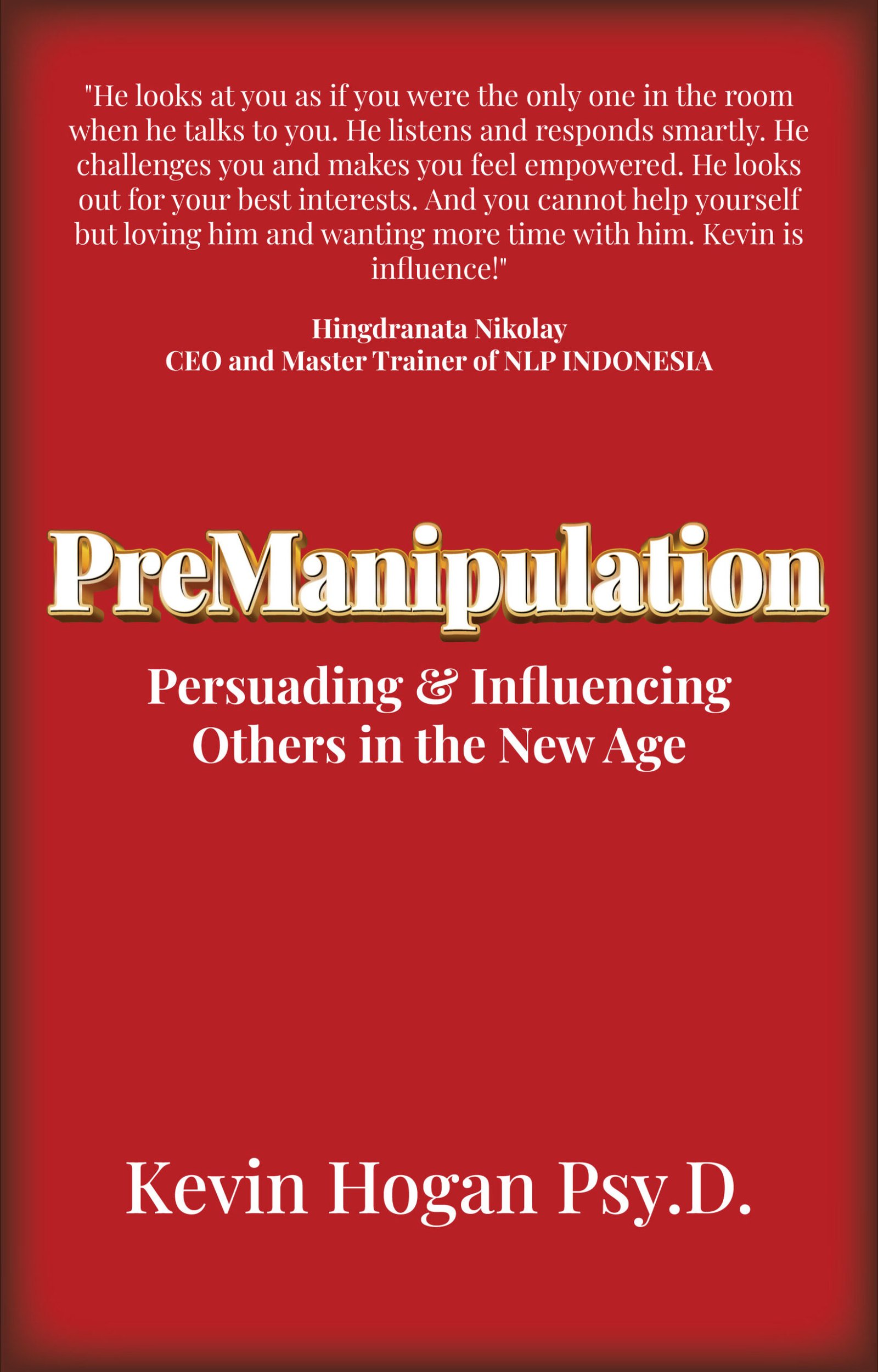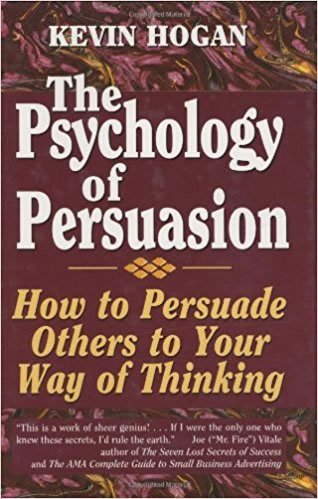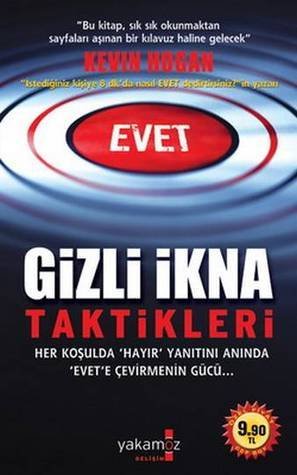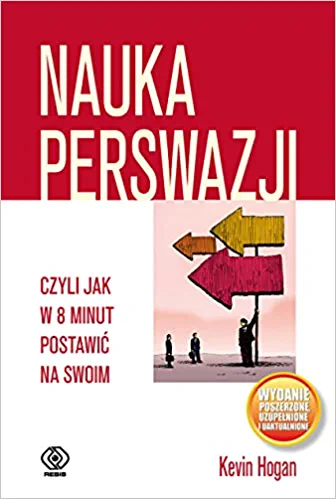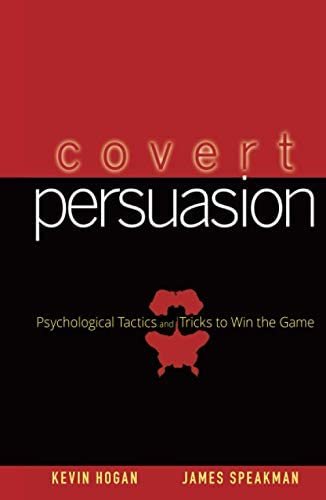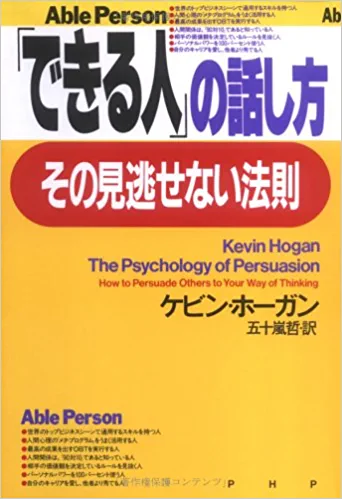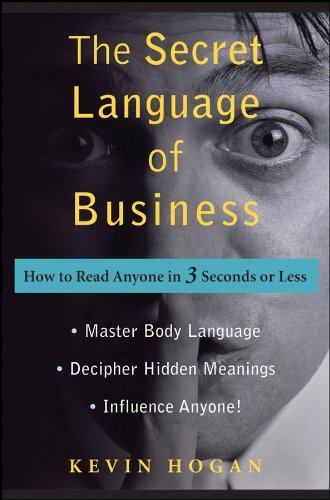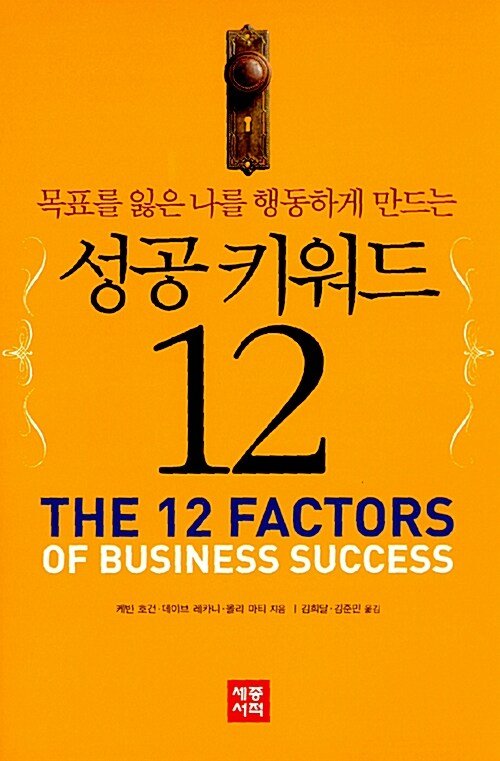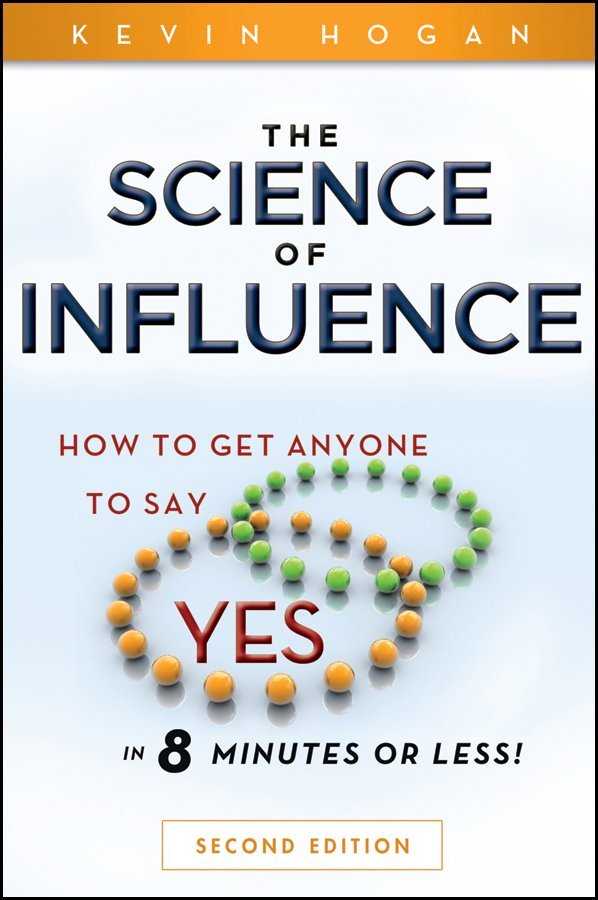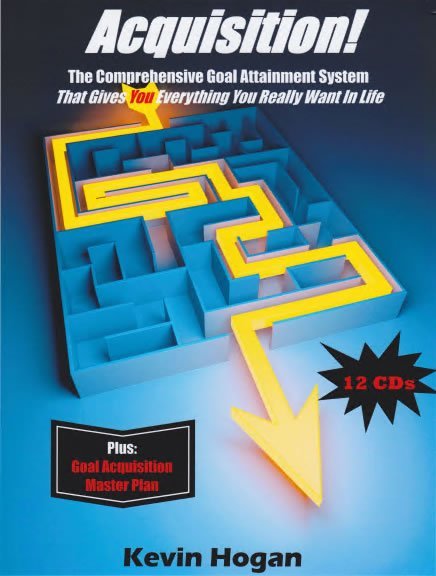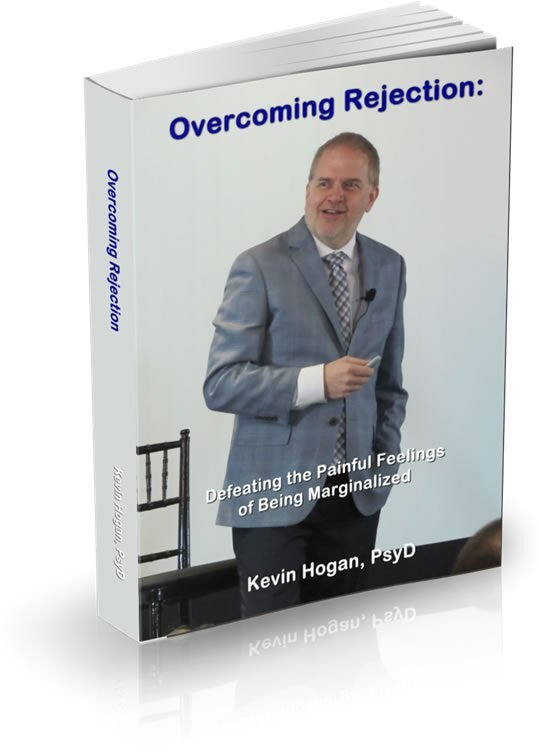The Marketing and Branding Interview with Kevin Hogan
(Covert persuasion is the subtle science and art of influencing human behavior.)
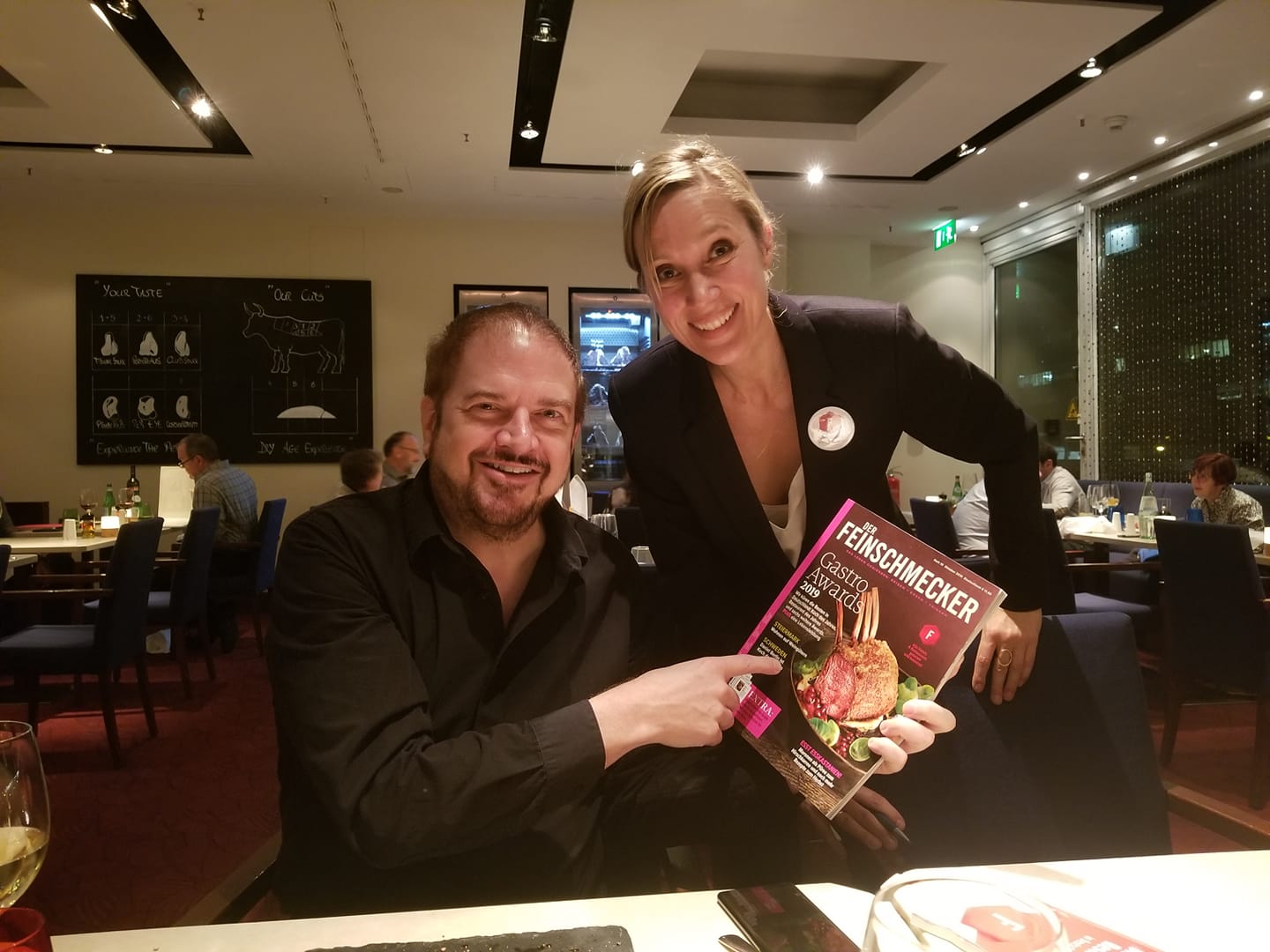
The Questions and Answers
1. By and large, you talk about ‘customer’s unconsciousness and the application of it in sales’ throughout your books. Did you have any special motivation to start this study? Namely, why we should focus on the unconsciousness?
 You could make the argument that there are three parts to the brain/mind. First there is your conscious mind. It is probably aware and probably makes decisions and thinks. Most people immediately think, “Well of course!” but the fact is that many, many scientists do not believe that humans are conscious. For example, you often answer questions or speak out before you have thought about what you are going to say.
You could make the argument that there are three parts to the brain/mind. First there is your conscious mind. It is probably aware and probably makes decisions and thinks. Most people immediately think, “Well of course!” but the fact is that many, many scientists do not believe that humans are conscious. For example, you often answer questions or speak out before you have thought about what you are going to say.
Brain scanning shows that these reactions occur BEFORE the question or information is processed in the thinking part of the brain. That’s why people often say things they don’t “mean to say,” because their conscious mind would never say those things. Certainly most of our behavior is nonconscious and only occasionally do you “catch up to your words” and “catch yourself” saying something foolish, wishing you could take your words back. The part of the mind that realizes these errors is the conscious mind.
… The second part of the mind/brain is the unconscious mind. This is a storehouse of memory, experiences, an ever changing data base of memories that change a little every time you consider them. Some scientists argue there is no unconscious mind at all, that there is simply a nonconscious mind. I disagree. I believe there is a difference because I can retrieve unconscious memory; I can’t retrieve nonconscious instincts, drives and desires. In my mind, :-), there is a significant difference.
Then there is the nonconscious mind and this is the “plastic hardware” of the brain. That means you have a lot of desires (sex, flight from fear, to eat, acquisition, to belong, etc.) that are pre-wired in to your brain almost at conception….or at conception. That wiring is not quite like the wiring for your television because it does reshape itself over time, but not as much as most people wish or think it might. So you have three parts of the mind: Conscious, Unconscious, Nonconscious.
Most of the things I teach are related to the nonconscious part of the brain. Although I was a Debate Team Member when I went to school, debate, argument, selling are all conscious mind functions. You are debating! Those are the kinds of conversations that are interesting but typically long lasting and non productive.
My work focuses on reducing resistance and lowering barriers in the nonconscious mind so that people behave without as much fear, with increased liking for you, and are willing to act more freely on their positive desires.
2. Could you please tell us what MAP(Mind Access Point) is?
 A “MAP” is something I discuss in one of my books. It is a Mind Access Point. You have all these defense barriers up against anything new. People are fearful of what they are not familiar with. Mind Access Points might be literal places in the brain, but I doubt it. They are metaphorical doors into the mind where you can enter and talk with someone in their mind.
A “MAP” is something I discuss in one of my books. It is a Mind Access Point. You have all these defense barriers up against anything new. People are fearful of what they are not familiar with. Mind Access Points might be literal places in the brain, but I doubt it. They are metaphorical doors into the mind where you can enter and talk with someone in their mind.
3. How do you think consumers are addicted to a certain brand? Namely, why they buy a specific brand continuously?
Consumers become “addicted” to brands the same way they become addicted to everything else. We are all addicted to many, many things. Addiction happens when the brain rewards itself by causing the body to participate in activities that make it feel very, very good. The brain “wants” these things regularly.
Typically when people think of addiction, drugs, alcohol, cigarettes all come to mind. But those are simply a few things that are addictive. Gambling, seeing a glass of water after being in the desert for two days, sex, all kinds of experiences release this “Dopamine Rush” in the brain and makes you feel so good you want to do “it” again and again and again. That is addiction. Addiction is neither good nor bad. It is a normal human experience.
People buy brands because they are rewarded by using that brand in potentially many different ways. Maybe someone sees you wear a stylish pair of jeans and you sense they are thinking, “Wow, he has style” or, “She is hot.” Those senses cause that dopamine rush, the brain, to be in a feel-good chemical bath, that you and I want to experience over and over and over again!
My job as a consultant is to help companies and people (that I personally like and find valuable) find ways to create addictions to their brands. Once you are addicted to a specific girl or guy, a brand of cigarettes, anything, every time you see that “thing” or person there is a chemical “pre-rush” in the brain.
This is why people feel better when they are on their way to go see the Doctor. They hurt at home, they get to the Doctor’s office and they feel better before they see the Doctor, just knowing that he will help them feel better. The brain is rewarding you in advance because it is convinced you will be at the Doctor’s office. One of the things that happens in the chemical bath of the brain is pain reduction of all kinds.
4. There are lots of brands which arouse ‘the sixteen basic desires of humans’ and are very successful. Could you please name 2 or 3 brands that could be good examples for this (brand, arousing the sixteen basic desires of humans)? And what basic desire they (the successful brands) are stimulating?
Arguably all good brands, successful brands, arouse at least one of the 16 Desires. Men can just TOUCH a woman’s lingerie (no woman necessary) and his desire is triggered. He becomes aroused.
 Starbucks doesn’t succeed solely because its Coffee is good, it succeeds because there is a scent in the air that pairs with the feeling of being part of a community or a collective group. When you go to Starbucks you get that “chemical bath.” It is simple addiction, not to the caffeine but to the feeling of belongingness that is triggered.
Starbucks doesn’t succeed solely because its Coffee is good, it succeeds because there is a scent in the air that pairs with the feeling of being part of a community or a collective group. When you go to Starbucks you get that “chemical bath.” It is simple addiction, not to the caffeine but to the feeling of belongingness that is triggered.
People feel more secure seeing the little sign that says their home is protected by a security company. That reduces the flight or flight drive and causes us to feel more tranquil. That’s another drive. If that sign disappeared one day, you would experience a great deal of fear and would be compelled to go replace it.
5. Have you heard about the brand, ‘Toms Shoes? What do you think the basic desire of human the brand is stimulating?
Tom’s Shoes wires into two core drivers. First, the desire to belong or be accepted. That’s what unique clothing does for people. It is a “sign” that says, “Hey I’m wearing these clothes just like you so I’m just like you and I want to be accepted by you and your group.” That’s the first thing…Tom is doing.
The second desire it wires into is altruism. The drive to do good for no obvious reason. They give away a pair of shoes when one pair is bought. The nature of the shoe will change over time, but this brand could last a very, very long time.
6. What brand is the most manic? What addiction codes does the brand have? And how is the brand stimulating the consumers, in your thinking?
 Brands like Mac tell others you are superior to the 94% of people who use PC’s. Mac users are part of a collective like a beehive or a “cult.” They are easily recognized when they have their laptop with them. They all belong. They are instant friends.
Brands like Mac tell others you are superior to the 94% of people who use PC’s. Mac users are part of a collective like a beehive or a “cult.” They are easily recognized when they have their laptop with them. They all belong. They are instant friends.
Rosetta Stone is a solid brand that takes advantage of the drive to learn/curiosity. A brand will succeed when it is paired with pleasure and a core desire. It will succeed if it reduces the flight/fight response and it is paired with a core desire.
7. What is the best way to read a consumer’s mind?
The consumers mind is really pretty easy to “read” or to “know.”
All of us are concerned about the same things. We want some combination of sex, knowledge, power, goodness/altruism, we all want to belong, most people have a desire for physical activity. Although the drivers exist in each person on a continuum, which can include a driver with a polar (opposing direction) response, most people want roughly the same things. We want to be out of pain and fear and we want to experience pleasure.
That said, we want to be out of pain and fear a great deal more than we want pleasure. Finer distinctions happen as you brand yourself or a product.
You or your product fulfill specific needs of other people so you will inherently have an attraction to the same kind of people over and over again. They will have an attraction to you or your product once awareness of the product, experience with the product and the triggering of a drive paired with reduced pain/fear and/or increased pleasure has occurred.
8. Could you please recommend practical ways to make the best use of your book for branders and marketers? For now, this supreme book is focusing on the salesman.
 In The Psychology of Persuasion, for example, there is a short section that is worth a thousand times the price of the book. The section is called “Meet John Doe.” John Doe is a reference in the United States to “any man” or “every man” or someone who has died but can’t be identified by the police. In the 1930’s there was a movie called Meet John Doe. The story was that of a hobo who eventually would go on to run for President through public relations, with the special theme that this man is like you and you need to be represented in Washington DC.
In The Psychology of Persuasion, for example, there is a short section that is worth a thousand times the price of the book. The section is called “Meet John Doe.” John Doe is a reference in the United States to “any man” or “every man” or someone who has died but can’t be identified by the police. In the 1930’s there was a movie called Meet John Doe. The story was that of a hobo who eventually would go on to run for President through public relations, with the special theme that this man is like you and you need to be represented in Washington DC.
In the book, I talk about the common and powerful traits that most people have that if you were to say them to a person, they would think you were reading their mind. Every marketer and branding expert should have that page TAPED to their desktop.
The focus of The Psychology of Persuasion is from the vantage point of the Salesperson for the most part. But it is no stretch to take that to marketing because sales is marketing and marketing is selling with very few major distinctions involved.
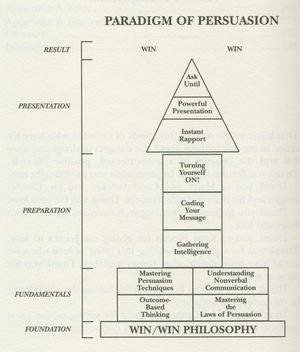 The Diagram that is consistent throughout the book looks like a rocket on a launching pad. And that is a great metaphor. Interestingly the diagram was not created because of a rocket. It’s actually a phallic symbol. About 15 years ago, right before the book went to press, I thought, “let’s just see if all this subliminal stuff I’ve been reading about might actually work.” So instead of some other diagram, I organized the structure of persuasion into a phallic diagram.
The Diagram that is consistent throughout the book looks like a rocket on a launching pad. And that is a great metaphor. Interestingly the diagram was not created because of a rocket. It’s actually a phallic symbol. About 15 years ago, right before the book went to press, I thought, “let’s just see if all this subliminal stuff I’ve been reading about might actually work.” So instead of some other diagram, I organized the structure of persuasion into a phallic diagram.
My speculation at the time was that such a diagram, not obvious, but subtle…would trigger people to keep the book after picking it up and looking at it. That has turned out to be the case, as the book has sold more than a million copies worldwide, making it the second greatest selling book on persuasion.
Within the diagram itself is the process of persuasion. It begins with understanding what you want out of an interaction, causes you to consider what your client or potential client wants, and then takes you through a very step by step, structured process to complete with a Win/Win or No Deal result. There is no benefit to sell someone something they don’t need, or perhaps want. (Sometimes what people want is not good for them.)
9. We think Branding is also a kind of persuading process via a certain message shown consistently. In this respect, all the branders and markers should know well about the notion of ‘Persuasion’. So, could you please interpret your diagram ‘persuasion paradigm’ in a branding (or marketing) sense?
Branding starts with persuasion, but it is really more about causing addiction. It is the relationship between a person and another person or the relationship between a person and a thing. The relationship causes pain/fear reduction or pleasure increase or both. Persuasion, of course, triggers those two things but branding keeps it cemented in the person’s mind, their being.
10. You are introducing the ‘persuasion paradigm’ as a very powerful tool to get ‘WIN WIN’ for both parts (sales man & client or supplier & demander). We can fully agree with it, and we would like to go one step forward, setting a hypothesis like that: “a brand could be in the middle of getting this ‘WIN WIN’ process because a brand might be a proper object to sublime id(or libido) in a good way”. How do you think about it?
If your product enhances someone’s life, causes them to feel connected to a group, to have an identity or to identify with some other person or group….if your product causes people to have fun or be scared (Horror Movie) then leave the theater knowing you experienced safe…fear….. If your product creates value in a person’s life…. then your product or you stand between you and your client, you and the person you are serving and it is the glue that cements the two of you together. Your hypothesis is correct.
Changing Minds with New Mental Technology is now required. This is the Genesis of that Mental Technology.
Covert Influence:
The Hidden Persuaders… Strategies
No One Has Ever Even Thought Of
The research unveils what works and what doesn’t, and I’m ready to share it with you…
Are you ready for it? Study after study shows that tapping into human emotions is tantamount to success!
What are the details?
On 7 CD’s, you can listen again and again to burn these new concepts, skills and tools into your mind.
Never before released on audio or in book form, this information is freshly tested and scientifically validated.
If you remotely wonder if that statement is correct, think about all of the money major corporations spent on advertising, marketing, promotion, sales and they are now bankrupt.
…It takes specialized knowledge and “digging deeper” to get where you need to go these days…
Getting people to “yes,” has never been more difficult in your lifetime than it is today. It’s going to be more difficult as people’s innate defense mechanisms create a shell around their decision making faculty.
…What Does This Mean for You?
“Delay”, “wait”, “not yet”, “being careful”, “I’ll think about it”, and all of the other “tomorrow” messages are emanating from all directions.
I tried to fit this on 6 CD’s so it would fit the containers we invested in.
No luck! (Fortunately for you.)
This is a lot of information and it just got a little bigger than I guessed.
How “good” is this program?
It’s on par with my best work.
No one else has this information except, now… you.
I want to show you one of the most surprising and perhaps one of the uncomfortable….powerful phenomenon in Covert Influence.
In fact, I want to share with you all the latest research available (well, almost all…!)
Influence Without Resistance. What’s the Key Factor? You’ll have most amazing, truly stunning tactics in predicting what and how your client (spouse, child, customer, read: anyone) will choose. Thus, you are a step ahead of anyone else in implementing the most powerful phenomena in consumer research today. Find out with this program!
Creating Irresistible Impulse. The button is there (for everyone); it just needs to be pushed. What are some of the irresistible impulses marketers are using on you? How can you take advantage of these tactics yourself? It’s all here in this section. Kevin details the marketing phenomenon that pushes the buttons…all the way to irresistible.
Tapping into Human Desires & Emotions. With just ONE change in strategy, a non-profit organization can get 5 times the donations. What can this strategy do for you? You can’t afford NOT to implement this tactic now.
Desires and Emotions… That Influence. You’ve heard some rumors, I’m sure about negative emotions and positive emotions in the influence process. But do you know what actually works, and what to emphasize in the process, and when? Find out once and for all!
Tribes. You’ve heard the term. What does it describe? How does it come into play in the influence process? Most important, how do you utilize the concept of the Tribe in order to make more sales? It’s all here… Kevin explains about subgroups and how to make appeals based on whether a group is “in” or “out”. This is cutting edge research that benefits you.
Covert Influence…to Control Behavior. You’ve seen the signs. Above the candy jar, tacked to the break room wall. Even posted on a fence, or highway. How do signs really influence? What elements should be used in signs to covertly control behavior? Fascinating new research uncovered for you!
Track Listing
CD 1Influence Without Resistance
Track 2 10:07 Primes/Identity Related Triggers
Track 3 10: 01 Two Core Principles
Track 4 10: 02 Covert Conditioning
Track 5 10: 07 Letter Proxemic Effect
Track 6 07:19 “I” PowerCD 2 Creating Irresistible Impulse
Track 2 09:59 Covert Influences
Track 3 10:02 The Nagging Compulsion for Completion
Track 4 10:02 Importance of Possession
Track 5 09:59 People want to be influenced?
Track 6 06:07 Importance of “Presentation”CD 3 Tapping into Human Desires & Emotions
Track 2 10:01 Ask for the time, and you get…
Track 3 10:04 Who Benefits?
Track 4 10:04 An Important Hidden Element
Track 5 08:38 TribesCD 4 Covert Influence to Control Behavior
Track 2 10:05 Triggering Neural Connections
Track 3 09:58 Choices, How many is too many?
Track 4 10:05 Hallmark Factor: The Power of Interruption
Track 5 11:26 The NEW Power WordsCD 5 Subliminal Influence
Track 2 10: 01 Subliminal Effects
Track 3 09:54 Trigger Points
Track 4 10:05 Channeling Sexual Energy/Sexual cues
Track 5 10:03 Test Your Knowledge
Track 6 13:31 Anticipated RegretCD 6 Things That Make Your Head Spin
Track 1 09:56 Instant Drama Resolution Covert Influence Technique
Track 2 10:02 Emotional Drama
Track 3 10:06 Lessons from a Dancer…
Track 4 09:54 So What Causes Dancers to Make It Big?
Track 5 10:09 Core Mindset Shifting
Track 6 04:59 Required Rituals of InfluenceCD 7 Getting Them to Say, “Yes!”
Track 2 05:07 When Do Women Let Down Their Defenses?
Track 3 05:01 Lap Dancing and Covert Influence
Track 4 05:01 What’s Most Important in Influence?
Track 5 10:03 THE Most Important Factor in Persuasion
Track 6 09:56 Motivation for Change
Track 7 07:59 Working Inside How Do People Actually Decide
Plus…
- Number of Choices Influences…
- The Power of Interruption
- Surprise and Novelty Influences…
- The Power of Words…and SO MUCH MORE!
Will you take advantage of this offering?
Or, will your competitor grab up his copy and start selling from under you? Do you dare put this off?
Take advantage now of this offer, it may not come your way again. This is a limited quantity pressing.
Included: Guidebook for Implementation Strategies on CD, plus 7 beautifully produced Audio CDs
You get EVERYTHING you will need to know about influencing others with hidden persuaders.
Get Your Copy of Covert Influence Now

